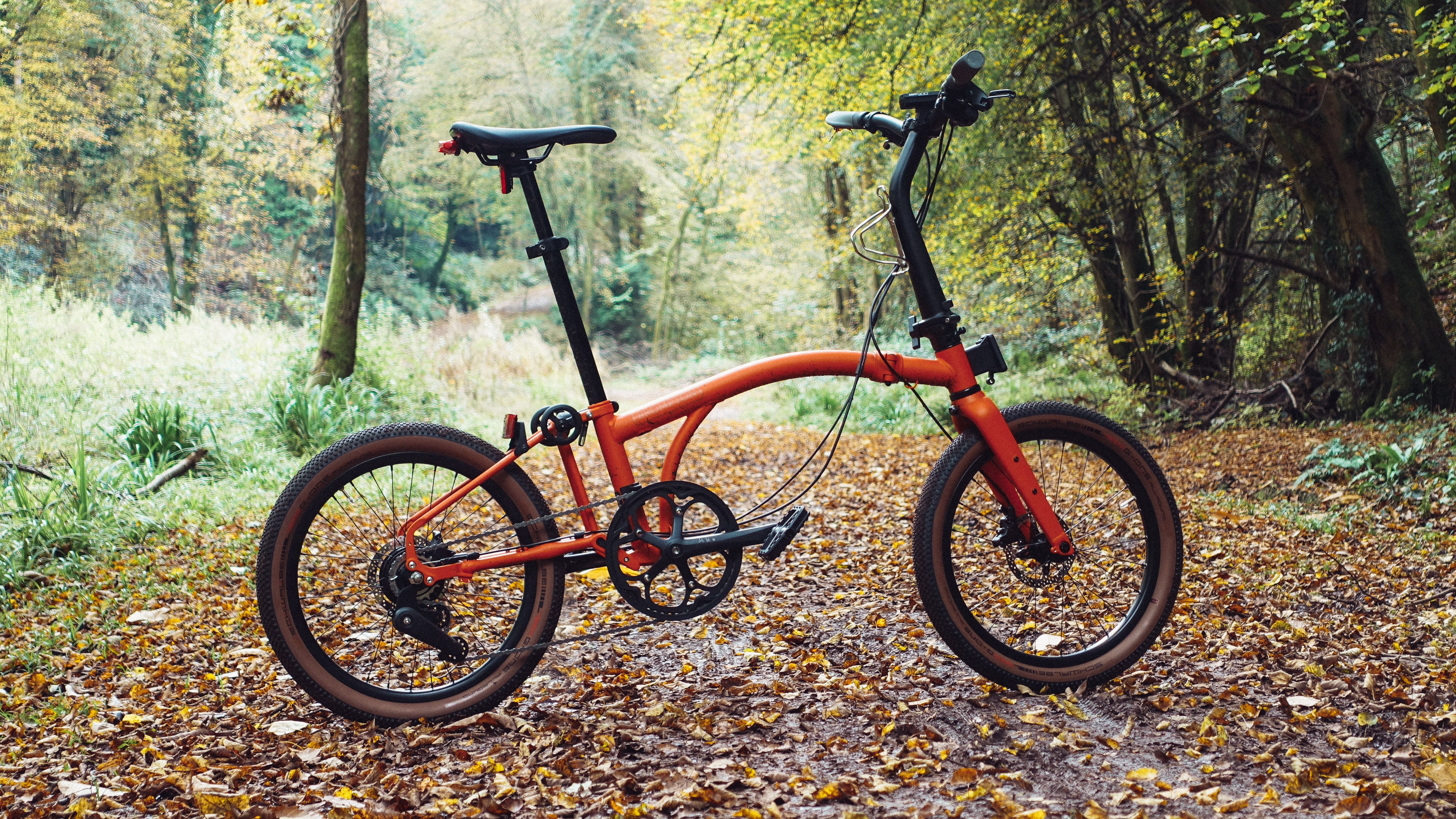
Price: £2,399 / $3,300
Total weight: From 13.9kg
Drivetrain: 8sp Shimano Alfine hub drive
I’ve reviewed a couple of Bromptons in my tenure here at Cyclingnews. The titanium enriched P Line left me scratching my head because I couldn’t fathom why you’d pay that much more for a bit of weight saving on a commuter bike, plus there were reliability issues with the transmission. The Electric P Line was more enjoyable, though the power delivery left a little to be desired.
The new G Line is an entirely different beast and a really quite drastic departure for the brand. Gone are the 16’ wheels in favour of larger, more off-road capable 20’ wheels with proper tubeless gravel tyres - Schwalbe G-One Allround no less, a very capable gravel tyre from my list of the best gravel tyres.
I’ve ridden the G Line to work, I’ve taken it to the gym, and I’ve bashed about the woods on it, and while it is capable, comfortable, and better in so many ways I have been trying and failing the whole time to work out who this bike is for. I even asked a friend who is genuinely thinking of buying one to see if I’m just some out-of-touch aero merchant.
I’m afraid the long and the short of it is that it’s a better bike than any of the normal Bromptons. The handling and braking are better, the ride quality is much improved and it looks pretty cool too. However, it’s worse at being a foldable, easily transportable bike and while it’s better at being a gravel bike it isn’t really good at being a gravel bike.

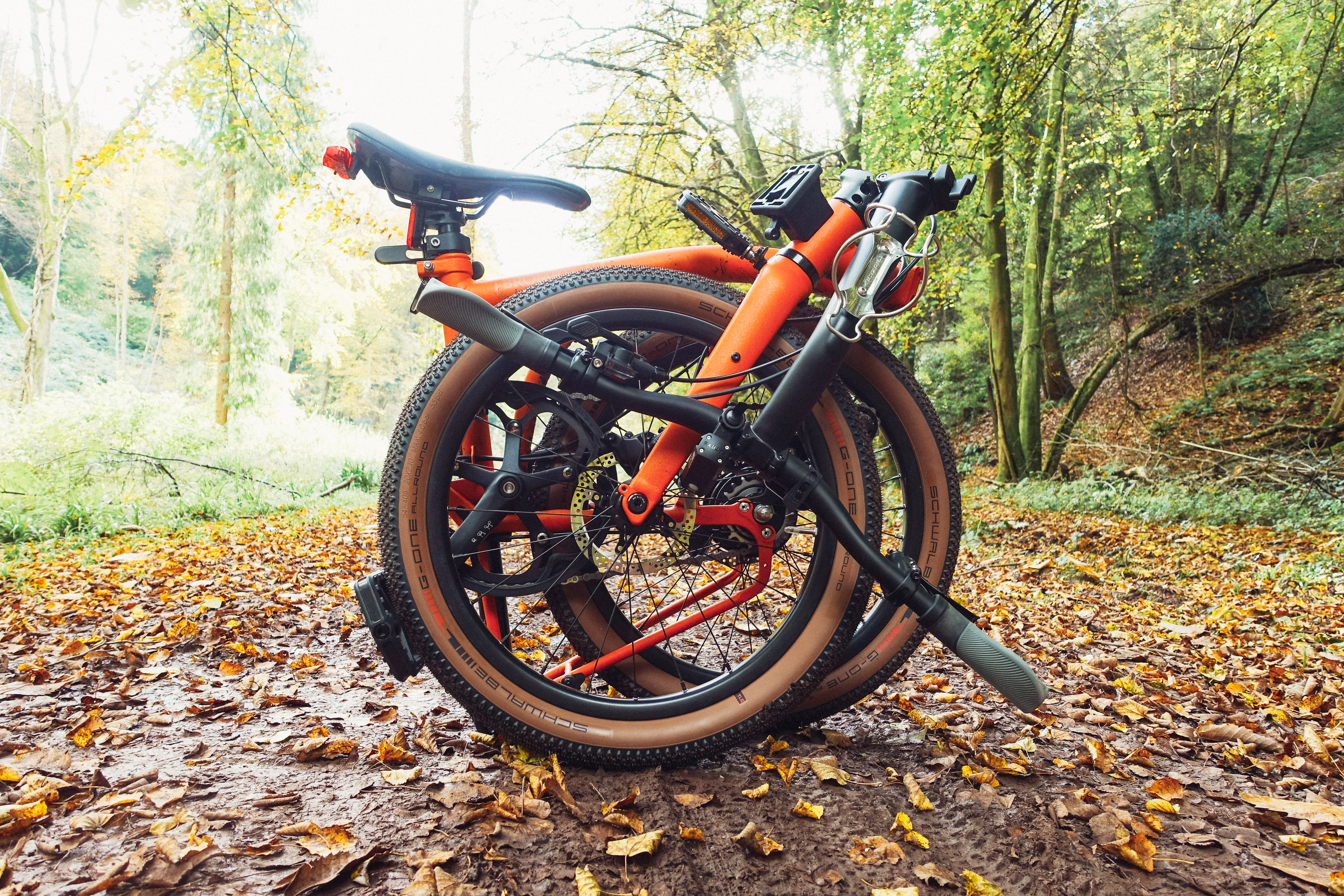
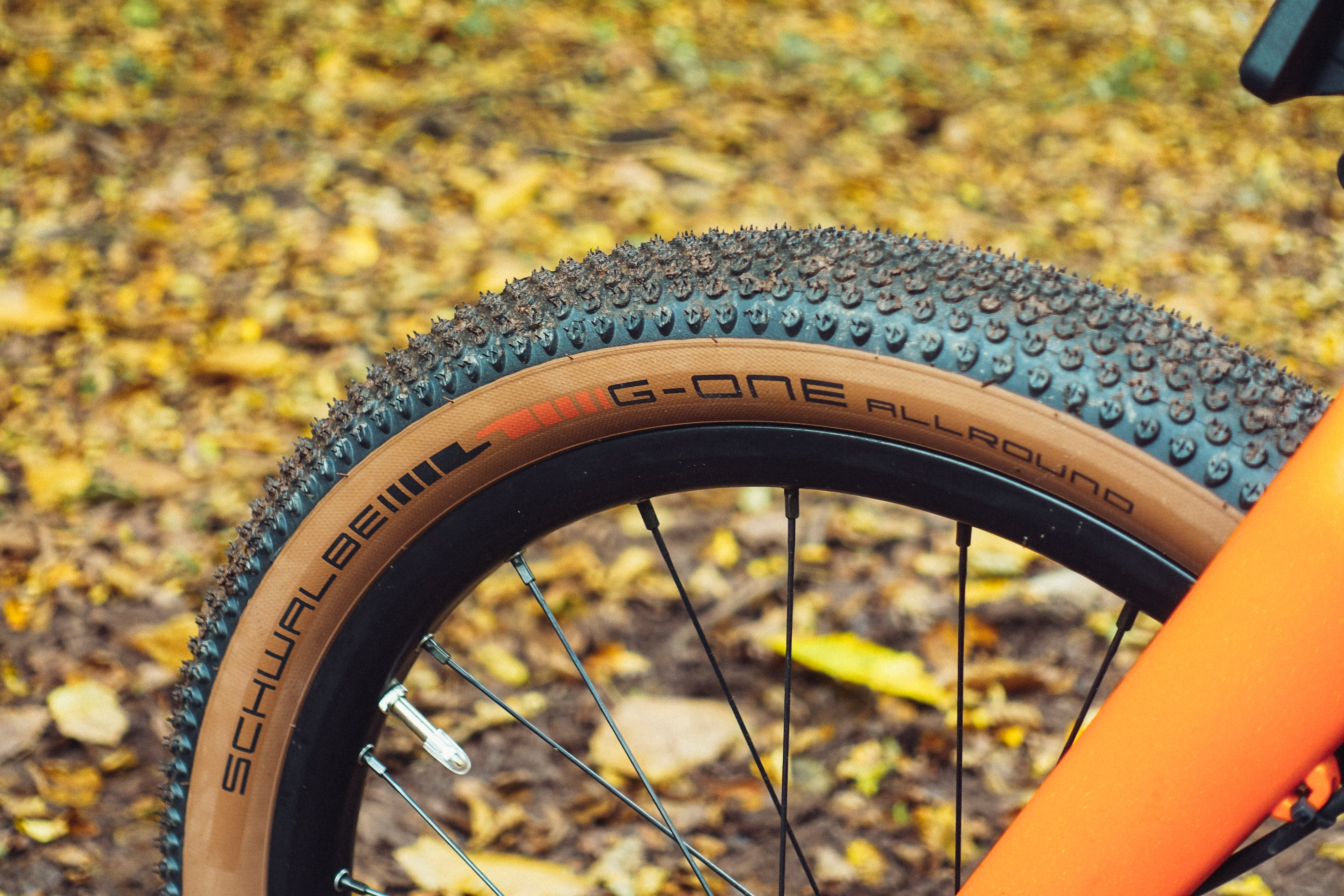
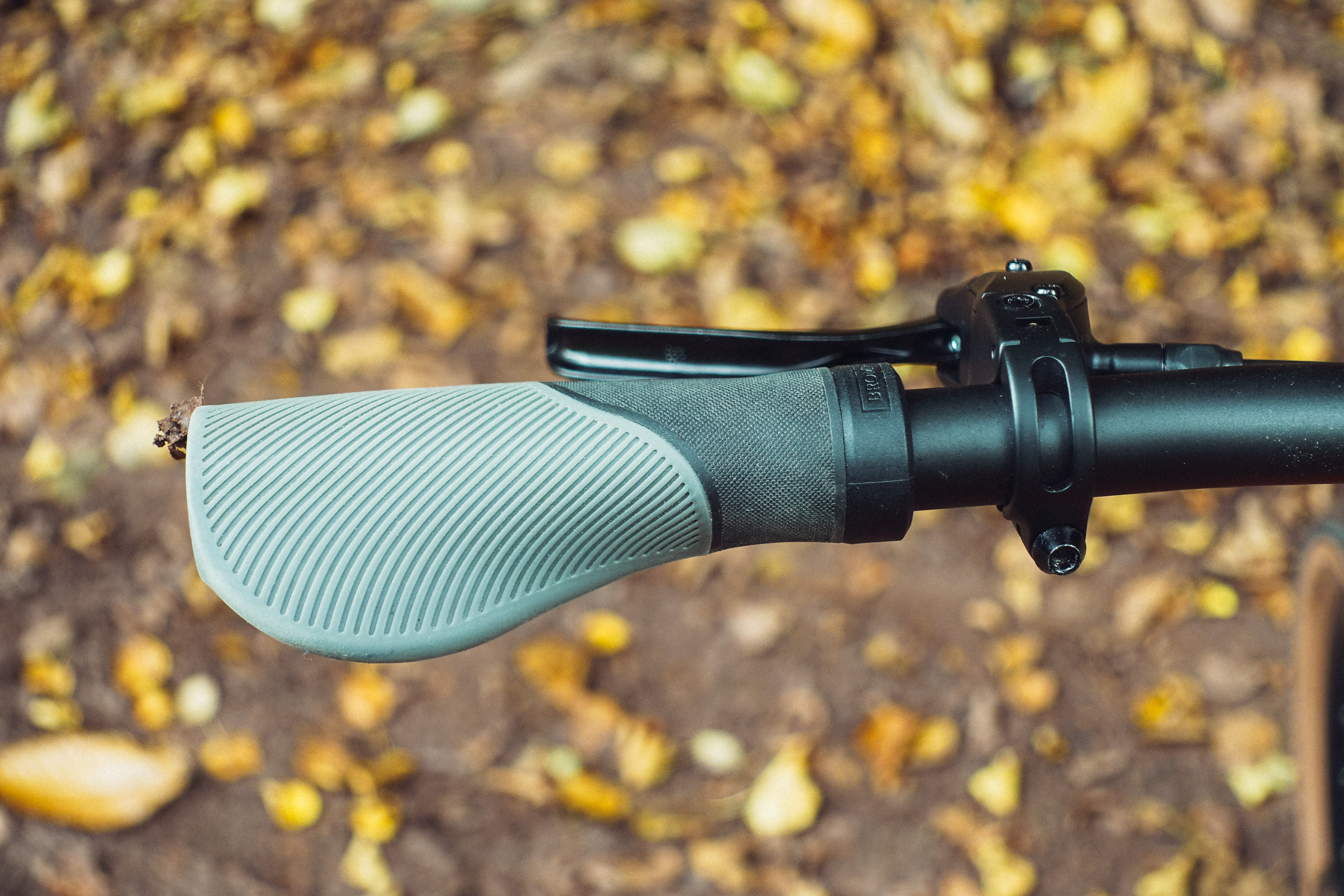
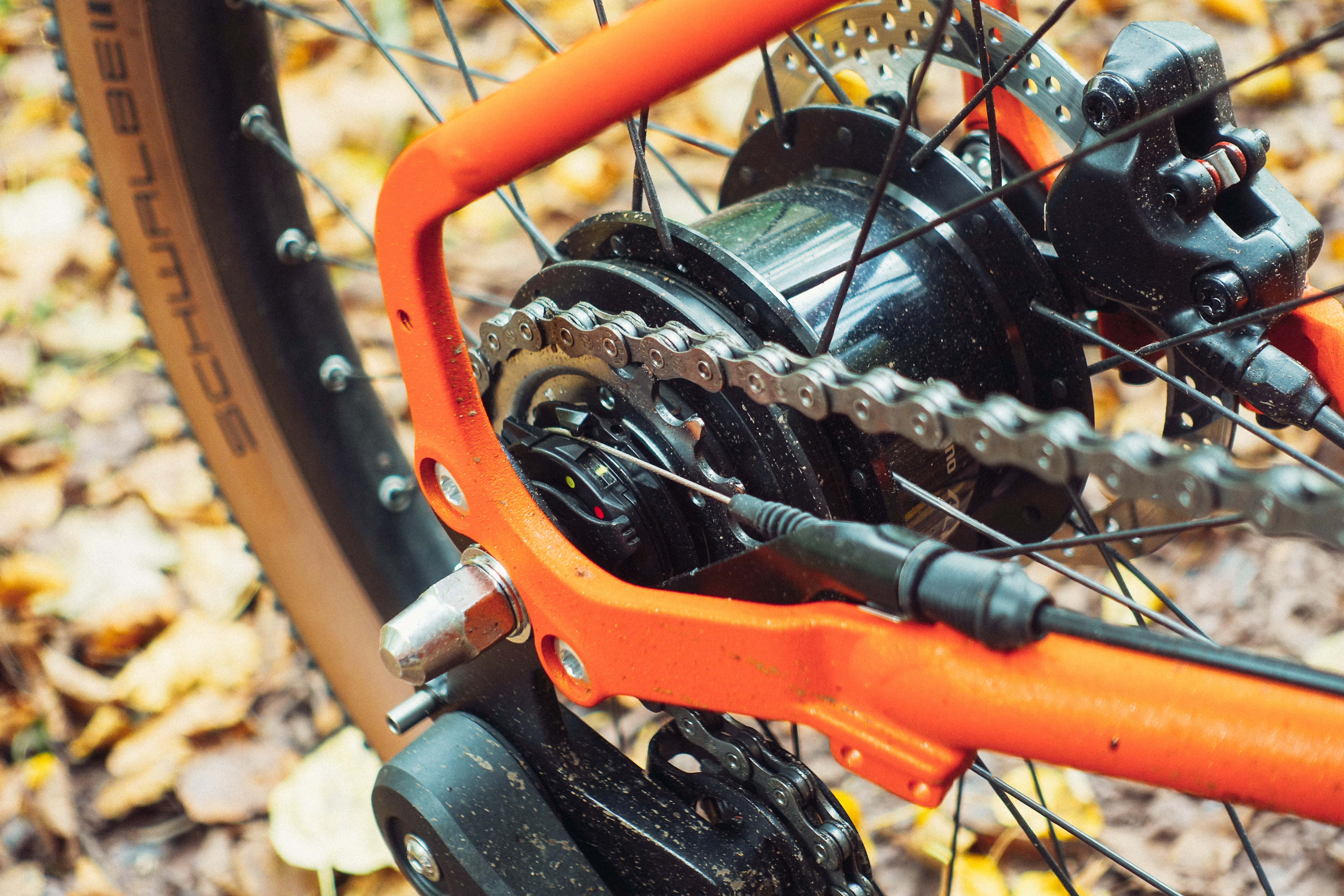
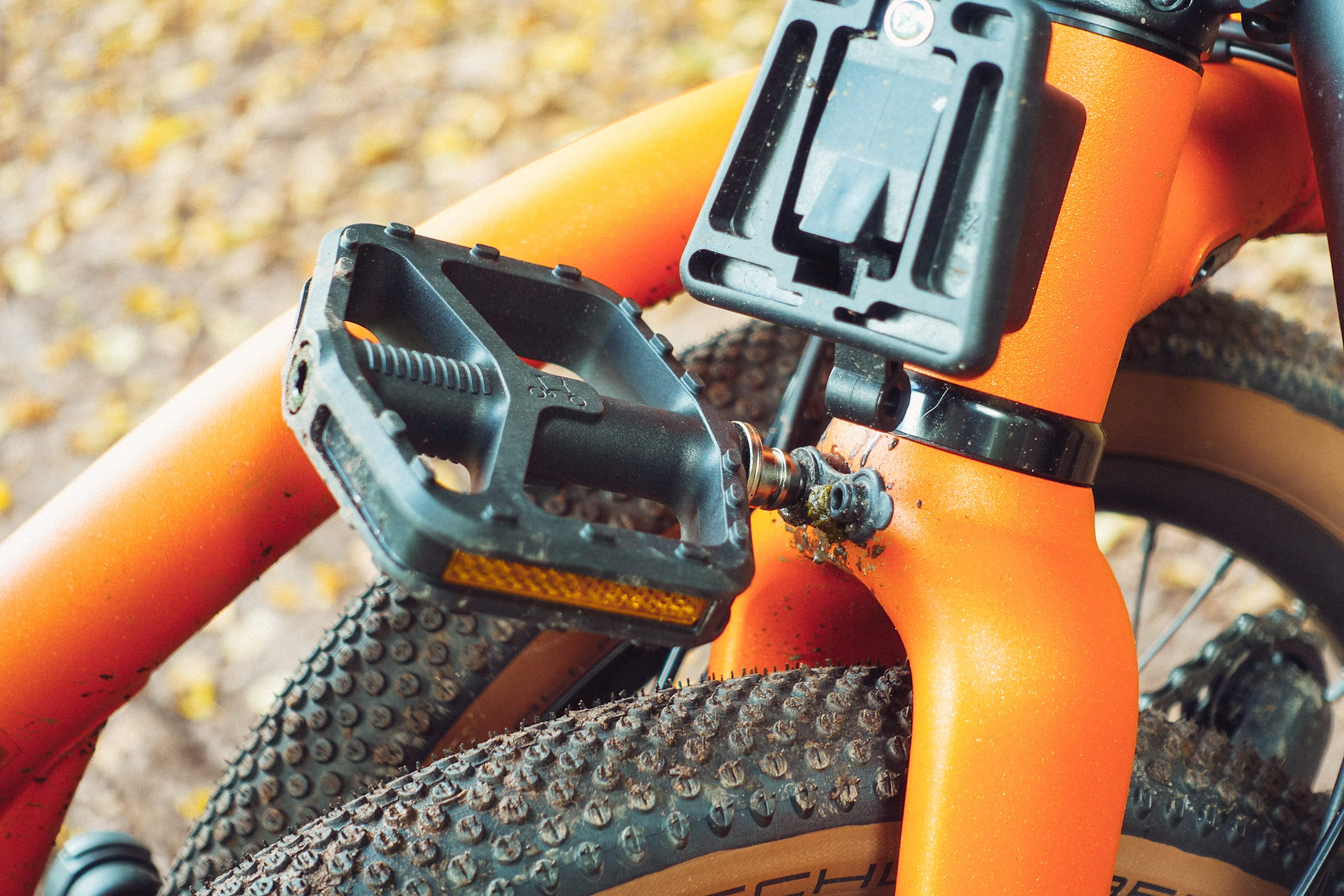
Design and aesthetics
Bigger, burlier, and heavier. I do actually think it’s by some way the coolest Brompton of the lot, or at least of the normal ones. The titanium T Line has a sort of ‘if you know, you know’ charm, but the G Line is just better looking. The curved top tube blends into the curved brace in a pleasing manner and the burly aluminium forks aren’t dwarfed by the very chunky tyres. I’m not a fan so much of heavily matte paint, and while the textured look means muck will stick to it so much more easily it does look good I’ll admit.
The tyres are really quite large: 54mm to be exact, and tubeless capable. The 20” wheel size is far more common, and should you wish to use this bike exclusively on tarmac you can easily pick up all manner of high volume slicks from the world of BMX. The pedals, too, are bigger. One of the biggest downsides of the normal Bromptons was the diminutive platform your feet had. Not so much of an issue here, and while they aren’t a patch on the best gravel pedals for proper off road riding, they do the job admirably enough considering the commuting designs of the machine. Interestingly, instead of folding away as on the 16” Bromptons, the pedal that sticks out when the bike is furled up is removable, and slots into a socket in the steerer tube. It’s a really neat solution from the world of Rinko bikes, and is definitely something that could be ported over to the bike’s smaller siblings.
The bars, as with basically everything else, are larger too. Wider, and swept, with proper ergonomic grips to give yourself a stable platform. There’s more real estate for mounting lights, and the long, swanlike neck of a stem has a pair of bosses into which a bottle cage can be screwed, which is a really great addition.
The transmission is a tried and tested Shimano Alfine 8sp hub, which is for the most part excellent. I’ll get into the gearing later, but a reliable hub drive for a bike with designs on being included in both the best folding bikes list is far better than Brompton’s own derailleur, which I’ve found to be a little flimsy and rather unreliable in the past.
Finally, from a ‘what’s new’ perspective, the inclusion of TRP hydraulic brakes and 140mm rotors on the spec sheet is something that’s been a much needed upgrade for some time. More reliable in the wet, more powerful, and requiring less frequent maintenance.
Other than being bigger, with more and newer things attached, the Brompton DNA remains mostly unchanged. The G Line folds up in the same familiar way as any other Brompton, just into a larger, heavier package. At 13.9kg in the lightest build it’s nearly 2kg heavier than the 6sp all-steel C Line, more than 2kg heavier than the basic A Line, and nearly 4kg heavier than the similarly priced part-titanium P Line. The weight is one thing, but the size is another. It is still quite a feat to create a bike that can fold so well, but there’s no getting away from the fact that the G Line is bigger. I could fit it under my desk still, but only just.
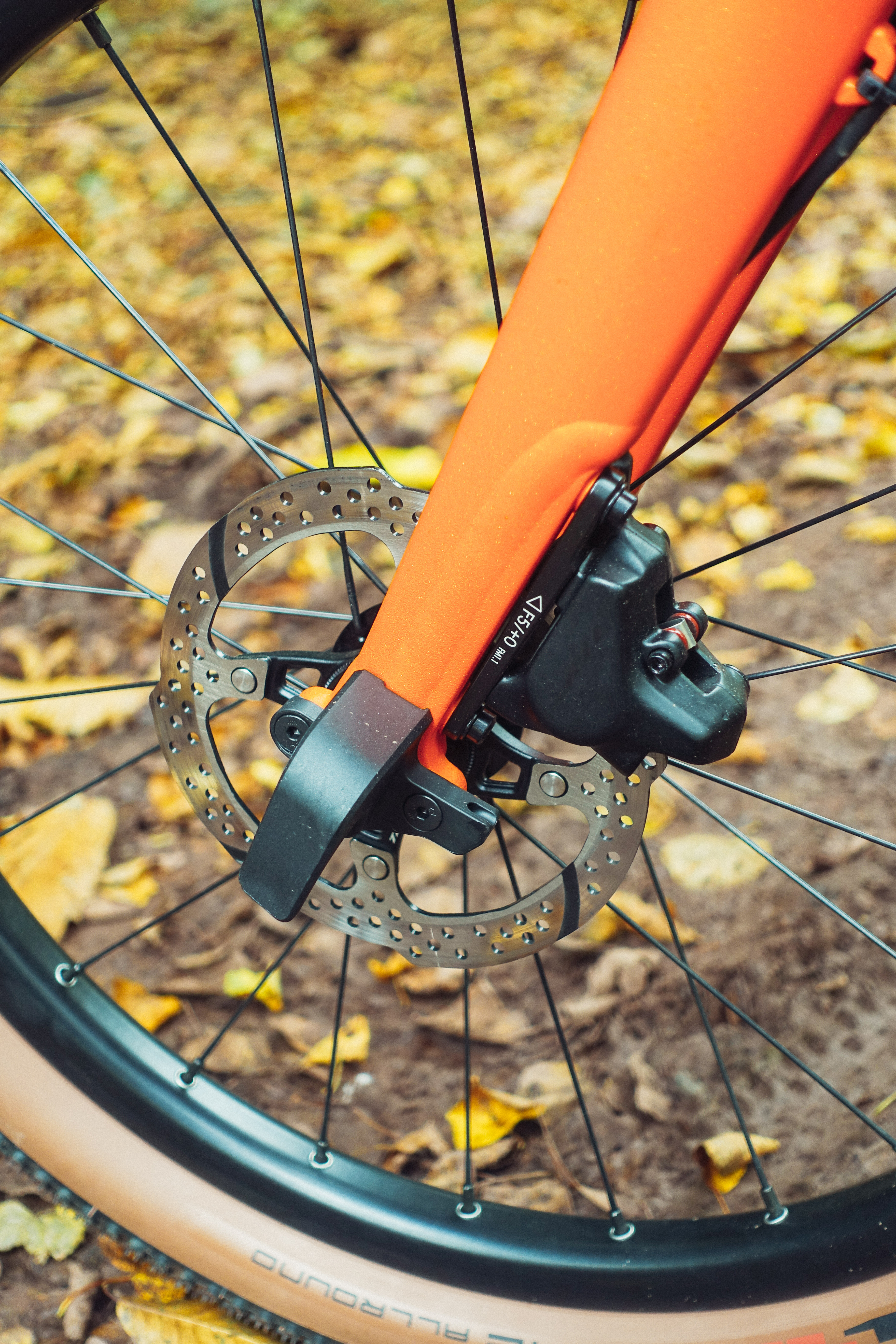
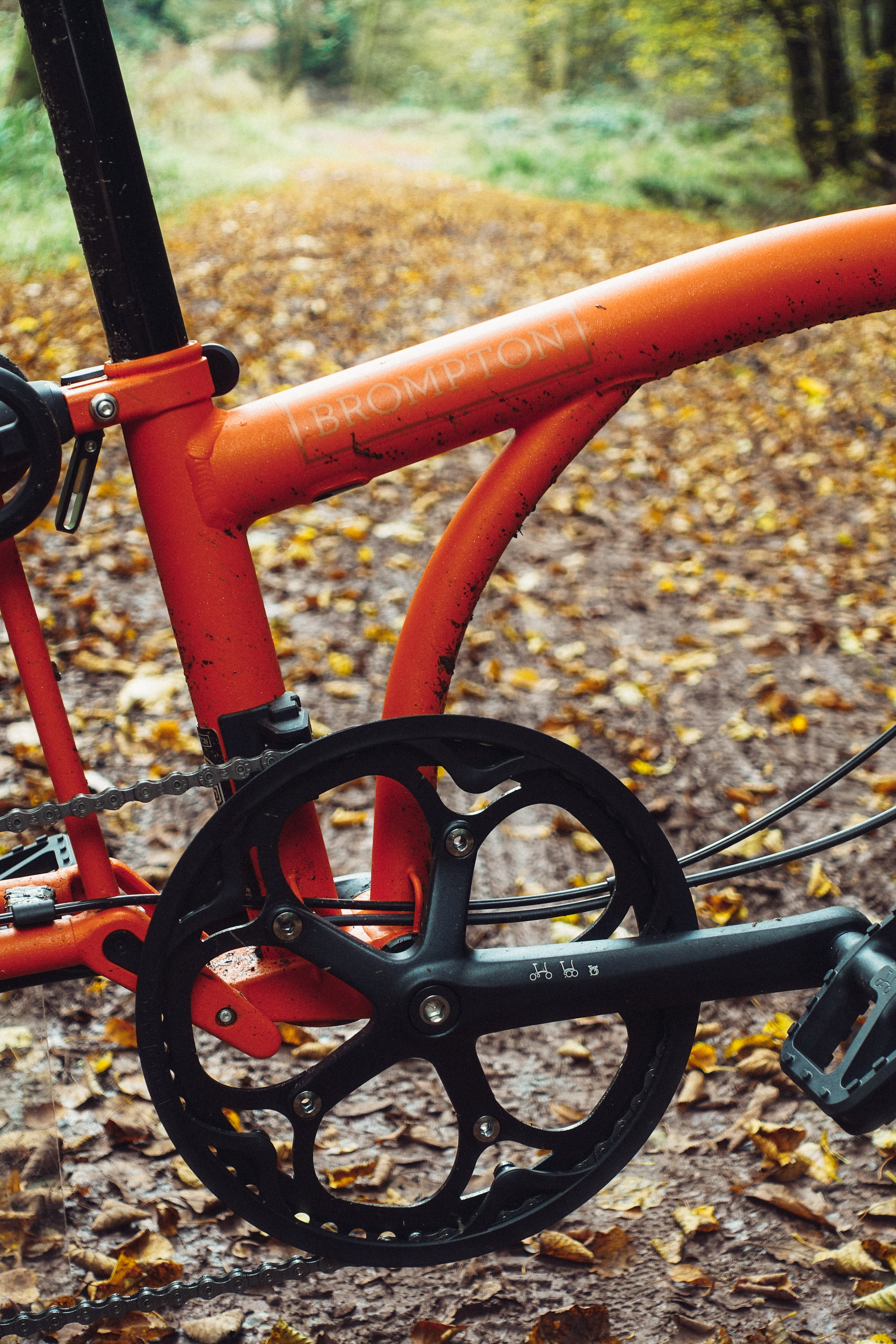
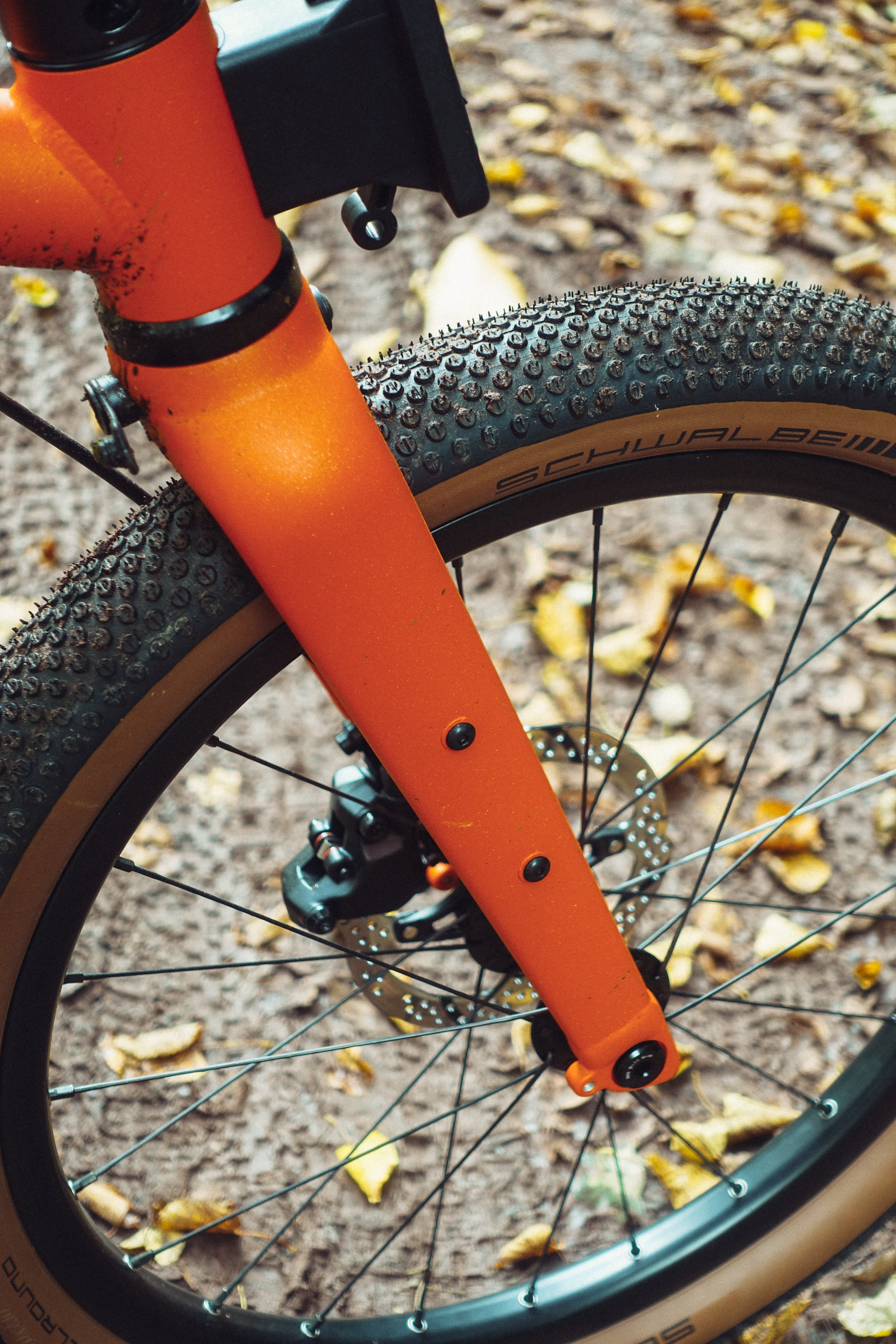
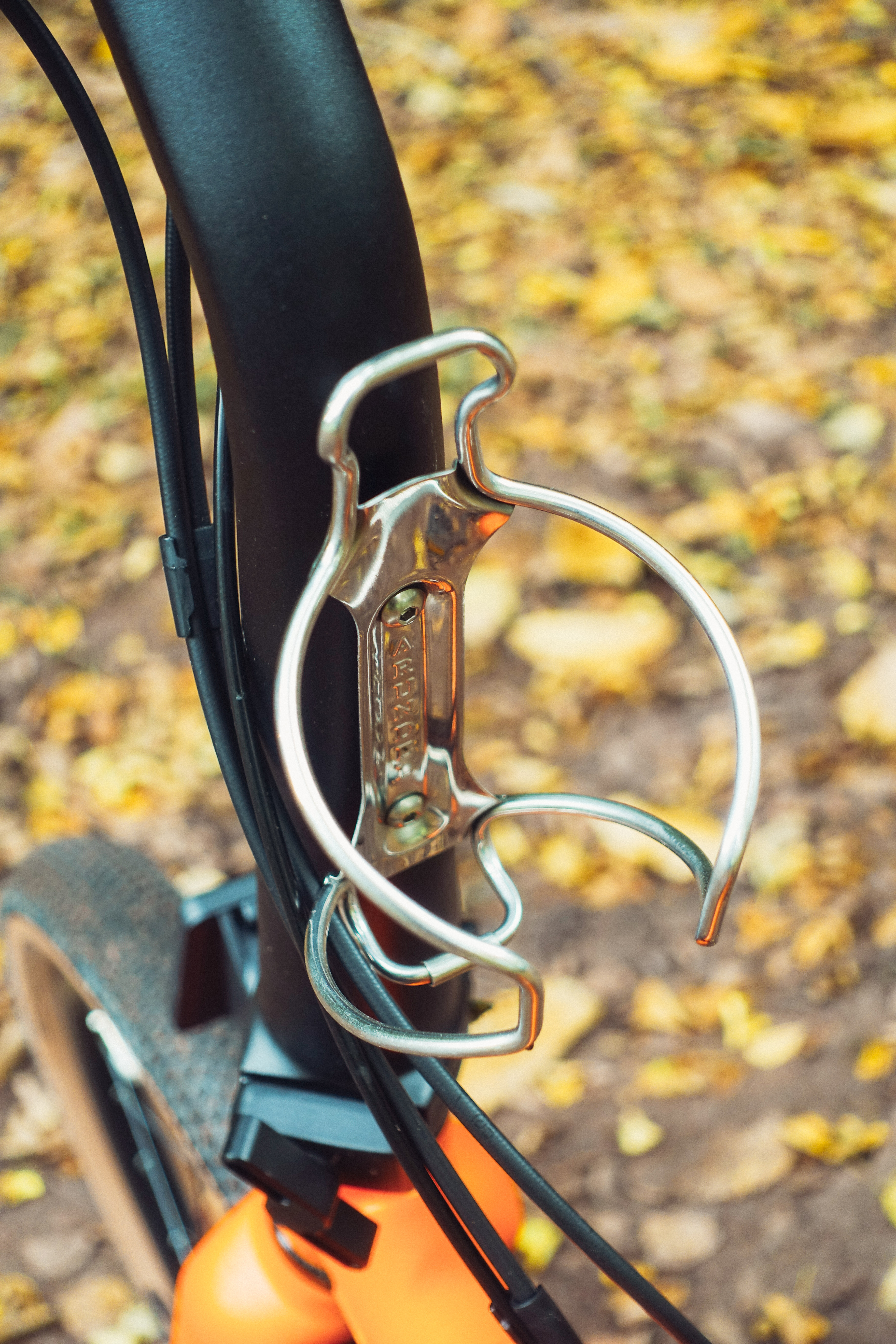
Performance
I have a friend who lives in the north of England. We don’t speak much, save for sharing memes about Diana, Princess of Wales, but when I posted that I had the G Line in for review she was very curious as to my opinion on it. The short version of our chat is that she was considering selling her gravel bike in the belief that the Brompton could work Monday-Friday as a commuter, and on the weekends it could replace her Genesis Croix de Fer, which she would have to sell to be able to afford the G Line. If this sounds like your train of thought too I am afraid I’m going to burst that bubble pretty quickly. The G Line is not capable of replacing a proper gravel bike.
It is infinitely more capable off road than a normal Brompton, but that’s not really saying much as the standard Bromptons are often times quite unnerving to ride on anything besides smooth tarmac. The larger wheel size, longer wheelbase, slacker head angle, and wider bars all mean it does feel a lot more like a normal bike, but it is still quite limited off-road.
On flat, relatively well maintained gravel - by which I mean nice canal towpaths - it’s dreamy. You are in a position to sit up and enjoy the view, and unless you hit anything overly muddy there isn’t anything that’ll perturb your onward progress. The tubeless tyres do an admirable job of transferring the power, and even for commuting duties in the city a tubeless setup makes far more sense.
It’s when the terrain pitches up or down that things get a bit less rosy. The transmission is excellent, and I do want to reiterate that I think this is the best transmission of any Brompton, but it’s overgeared for off road use. The riding position doesn’t exactly encourage you to lay power down, and riding out the saddle is tricky, so on steeper off road gradients you are somewhat hamstrung. The small wheels with big fat tyres also have a tendency to float within, rather than scything through mud, meaning in the wet you can find yourself crabbing sideways and spinning the rear wheel.
Speaking of which, if you do buy one of these please please please just get the one with mudguards. The Schwalbe G One Allround is a great tyre, and honestly a sensible spec choice for a bike like this, but they can’t half fling muck about!
I did decide to try and ‘send it’ down a gravel gulley that is normally somewhat sketchy on a well equipped, 700c gravel bike. I got down, and having disc brakes is wonderful, but I was definitely picking my way down. I am not sure I’d have liked to do the same with a large piece of luggage attached to the head tube. You can fit cargo cages to the bosses on the fork racks, but they will impede the bike’s ability to fold up and so are sort of… useless?
On the road my impressions were really quite positive. It's still nippy and agile, able to flit through a congested city street like an orange fly, but the feeling of near-instability that was so much the hallmark of the normal Bromptons is gone. It’s enjoyable, never scary, especially with the confidence you can stop on a dime in all conditions. It does feel more sluggish though. You are in much the same upright, non-aerodynamic position as a standard Brompton, but the weight penalty is noticeable, as is the drag from the tyres.
The tyres are perhaps the big selling point for performance on the road. They are slower and feel more draggy, but they mean you have to stress about potholes, cobbles, and generally slippy conditions far less. More than the geometry changes they have the biggest positive impact on the bike’s performance, and if you just want a folding bike that’s a little more confidence inspiring then it does do that well.
On a 45km round trip to the office and back, taking in everything from dual carriageways to canal paths, I was left quite drained. It’s not a bike I’d really relish doing any distance on, but it’s a Brompton so the theory goes that you ride to the station and just hop on a train. The gearing, while over-geared for gravel use, is spot on for the road, and the ability to shift down without pedalling at traffic lights is always a good thing in my eyes.
Except it’s too big. It’s not officially too big for trains, and I’ll admit that a 2kg penalty isn’t enormous, but I’m not the strongest chap and the difference lugging the folded mass about is great. I walked it into my gym and pretended I’d forgotten my lock to avoid locking it up, and even trotting the 20ft or so across the road was a bit of an ordeal. I took to hauling it by the top tube rather than the saddle. Again, the roller cage would help here; let the earth carry it for you when you’re on smooth surfaces.

Value
The value proposition really depends on your use case. As a commuter I think it fails to stack up as it is fundamentally worse at the whole raison d’etre of a Brompton, which is being able to fold up really small and be able to be taken on a train in a nearly stress free way. You can get a normal Brompton into the overhead racks on many trains but I’m not putting the G Line up there anytime.
I think the only real use case I can think of where it actually adds value is as a holiday bike. In Britain the trains are crap, and our gravel is often muddy and steep. Chuck it in the boot of your car and drive to France and there’s far more lovely, car free gravel to be had, bimbling from vineyard to fromagerie to boulangerie to an early diagnosis of gout. The campervan crowd will likely be a key market, and my parents are both keen cyclists and avid campervan enthusiasts, so should they get one? Well, they spent about the same amount on decent e-bikes that are just as capable on tame gravel and generally more useful as bikes and just pop them on a bike rack.
Verdict
On reading this back it does sound like quite a damning review, but there is a lot to be celebrated here. The G Line is better in a lot of ways than the normal suite from the brand. The handling, braking, comfort and transmission are all much better and it’s generally just a nicer bike to ride, but the flip side is that all of this is gained at a cost to the brand’s only MO. The G Line can fold up, yes, but I fear it is too large and cumbersome to be truly useful in this regard, at least not without becoming an annoyance.
Bring the disc brakes, the water bottle bosses, tubeless, and the transmission over to the standard line of Bromptons and you’d have a much more compelling offering in my view.
As a holiday bike, if you don’t want to opt for a bike rack, I do think it makes most sense. If this is your aim though, for a bit more money you could get a Moulton XTB, and while that doesn’t have disc brakes it will pack into a car boot and ride more like a normal bike with a proper SRAM 11sp transmission.
Perhaps it’s not that the G Line is bad as a gravel bike, it might just be that British gravel isn’t suited to it. If you live somewhere where your commute could involve traffic free, well maintained gravel, and your trains are better than what we have to put up with in the British Isles then it might actually be perfect, but it’s never going to replace an actual gravel bike.







